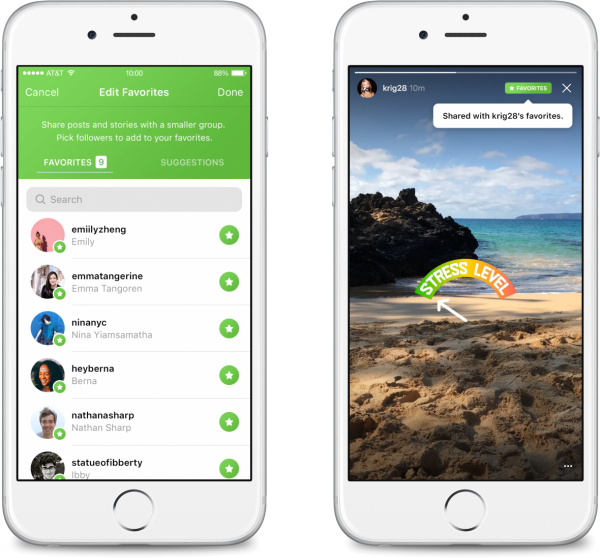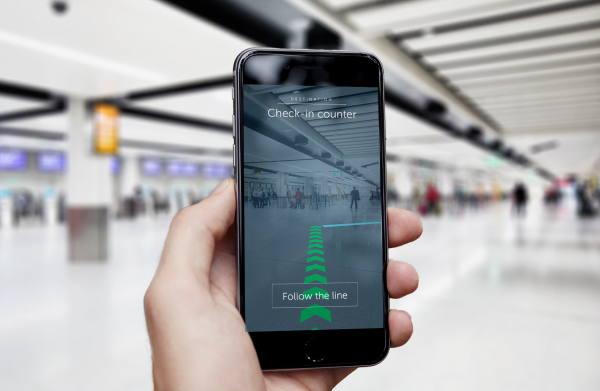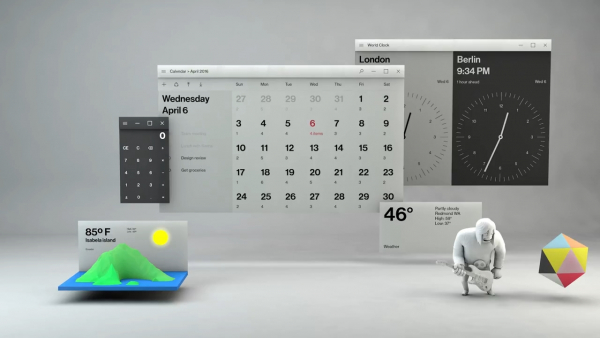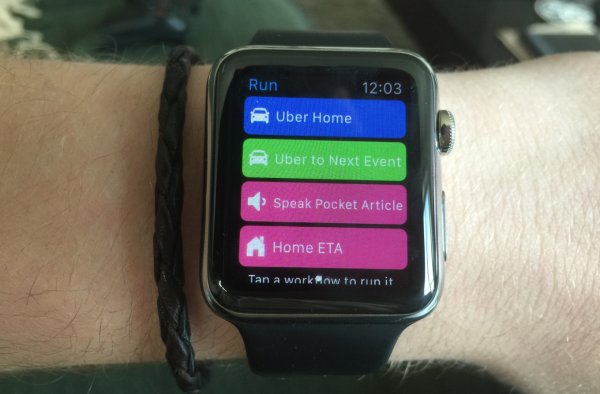
Instagram Tests 'Favorites' to Separate Friends, Followers →
Instagram has begun testing a way to share posts with a more limited group of friends. Called favorites, the feature attempts to improve on earlier social network friend lists, encouraging users to post more often by giving them more control over their audience. If it rolls out broadly, the feature could turn Instagram into the default place to share for more groups of friends — and reshape the social dynamics of Instagram in the process.
Before Instagram developed favorites, users tried to build versions of it for themselves. They created so-called “Finstagrams” — private Instagram accounts followed only a handful of their closest friends. Or they posted photos publicly and then deleted them after their close friends had acknowledged them with a like.
This is something I've felt should be standard across any mainstream social network: the ability to distinguish Friends from Followers so users have more control over what they share.
People Detection Demo with ARKit →
Imagine the possibilities when ARKit applications like this can be used in social settings and multiple people can all see the same things.
Imagine Steph Curry shooting a fireball when he's about to break a three-point shooting record.
Imagine going to a festival and seeing floating identifiers in the crowd to help you find your friends.
Imagine dating apps where you can go to a public place and broadcast your single-and-looking status, but only to people who match your criteria.

Indoor Navigation at Gatwick Airport via Bluetooth Beacons →
The UK’s second busiest airport, Gatwick, has opted for the latter approach to power an indoor navigation system it’s launching as part of a wider, multi-year transformation program.
It’s now finished kitting out its two terminals with around 2,000 battery-powered beacons so that digital map users will get a more accurate blue dot as they wander around. The beacon system will also be used to power an augmented reality wayfinding tool (pictured above) — so that mobile users will be able to be guided to specific locations within the terminals via on-screen arrows. The beacon system is slated as supporting positioning with +/-3m accuracy. […]
Gatwick says it will not be collecting any personal data via the beacons but says “generic information on ‘people densities’ in different beacon zones” will be used to help improve airport operations — such as queue measurement, streamlining passenger flows and reducing congestion.
This is the first time in a while we've heard of Bluetooth beacons in the wild. This is something to watch. Venues will be motivated to adopt this for more analytics, just like Gatwick. Consumers will be motivated for easier navigation. In addition to airports, think malls and Disneyland.
This is a "boring" technology that will be fundamental to augmented reality applications in the real world.
I'm eager to see if Apple unveils more progress with their four-year old iBeacons technology.

Microsoft's Fluent Design Language →
This is GORGEOUS. For years, I've seen Apple register patents that imagined desktops in a 3D space. I've had a hard time envisioning that until now.
This concept by Microsoft makes me incredibly excited for augmented/mixed reality.
With the iPhone 8 allegedly jumping to 5.8 inches and going bezel-less, they should refresh iOS with interface elements placed closer to the bottom for easier thumb access.
Apple should embrace the Apple Watch as a notifications hub: allow third-party developers to use custom sounds alerts and/or haptic feedback patterns with notifications.
MIT's Super-Accurate Wireless Speed Measurement Tech →
MIT’s Computer Science and Artificial Intelligence Lab has figured out a way of measuring walking speed to within 95 and 99 percent accuracy — all without requiring a wearable or other on-body measurement device. The tech uses wireless signals, dubbed “WiGait” by the research team, sent out by router-like devices within the home to track walking speed and stride length over time.
Based on my theory that Apple will use its iBeacons and Indoor Mapping to supplement Augmented Reality in the real world, I could see Apple acquiring this tech.

Workflow App: The Future of Wearable and Voice-First Apps
Kyle Russell of TechCrunch theorizes that Workflow, an app for iOS power users that was recently acquired by Apple, is a hint at the future of Apple Watch apps:
Instead of providing an interface with options to pick from a menu or icons representing actions, Workflow on the Apple Watch has been stripped down to verbs. I want an Uber home, or to the next meeting in my calendar. I’m walking home and want to send an ETA to my roommates. Maybe I’m on BART and it’s just too tightly packed to read on my phone — no worries, I can pick a Pocket article to be read over the headphones plugged into the iPhone in my back pocket.
There are no gestures to remember or content to download to fill a feed. It’s the perfect application for the WatchKit app paradigm, with a single tap executing multiple instructions on the phone. And if, say, a destination or article needs to be picked, the pre-made workflows in the app’s gallery will serve up a few options that users are likely to choose.
Over the coming months, most developers will figure out that the best question to ask themselves when designing smart watch apps is, “What can I help users do with a single tap?” With cameras, LTE, GPS, screen size, and battery life keeping the smartphone relevant for the foreseeable future, developers should assume that users will always have a phone on them for any action that takes longer than raising your wrist, swiping once or twice, and tapping a button or two.
Another supporting argument for Apple breaking down traditional apps into its smallest, simplest actions to make more things possible on the wrist and with your voice.
If Autonomous Vehicles… →
Benedict Evans brings up a some insightful questions for electric and autonomous vehicles becoming mainstream:
If autonomy ends accidents, removes parking and transforms what congestion looks like, then we should try to imagine changes to cities on the same scale as those that came with cars themselves. How do cities change if some or all of their parking space is now available for new needs, or dumped on the market, or moved to completely different places? Where are you willing to live if 'access to public transport' is 'anywhere' and there are no traffic jams on your commute? How willing are people to go from their home in a suburb to dinner or a bar in a city centre on a dark cold wet night if they don't have to park and an on-demand ride is the cost of a coffee? And how does law enforcement change when every passing car is watching everything?